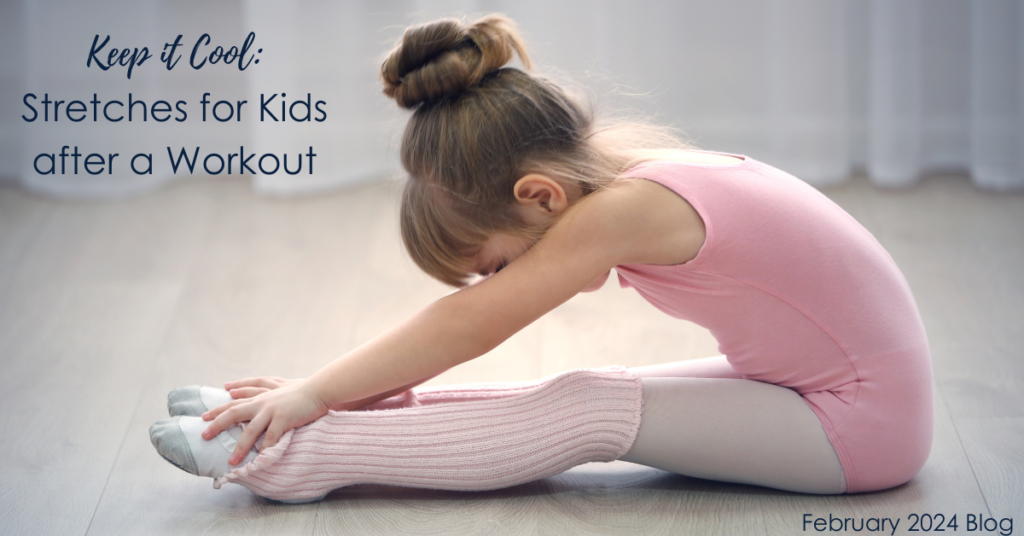
For a workout or an intense session of active play to be effective for overall health, it helps to help the heart rate come down, let the muscles stretch back out after being contracted through work, and to get lots of deep breaths. This part of exercise is called a cool-down. Schools and daycares that work with Stretch-n-Grow programs like Dancin’ Tots or Fitness Stars know that we always make sure the kids’ bodies are getting what they need to recover appropriately. The time to increase flexibility and get a lot of oxygen into the blood is after a lot of activity.
Here are # ways to have an effective cool-down with kids of all ages.
- Focus on age-appropriate stretches. As children age, they become more aware of their bodies, and can exercise a greater degree of control over them. Asking four-year-olds to do a thread-the-needle stretch (where you thread one arm under the other, which is at a ninety-degree angle) may be too much, but a ten-year-old could do it! Getting kids to stretch will help them maintain a healthy body for years. Good stretches for all ages include toe-touching, lying down hip twists, the butterfly, and the seated four.
- Breathe slowly and with intentionality. Getting a lot of oxygen into the body helps lower the heart rate and feeds the muscles, which have just worked hard. Combining deep breathing with stretches can help build flexibility and allows the body to repair itself. Muscles are built by putting stress on them and creating small tears, which then repair themselves, and oxygen plays a key role in this repair system. In through the nose, out through the mouth, slow and steady!
- Don’t just stop all activity. Cool-downs are a period to move slower, and with intentionality. For kids, especially coming off a period of exciting games, they can be tempted to just come to a sudden stop. It requires a little patience and coaching, but helping kids slowly bring their body back to baseline through the cool-down is worth the effort. Just stopping isn’t necessarily bad at young ages, but starting the habit in childhood will help them keep it for the rest of their lives.
- Use a foam roller if available. Foam rollers are round tools used to facilitate the relaxation of muscles. When a muscle is worked hard, lactic acid builds up in the body, which is what causes sore bodies the next day. For kids who have started playing a sport regularly, foam rollers can be particularly useful. You roll the tool back and forth over select muscles, which helps move the lactic acid out of the muscle, reducing any soreness the next day. This tool is super important in younger children, but for child athletes, and as they approach adolescence, it can be helpful to prevent aches and pains.
Interested in learning more about how Stretch-n-Grow can help kids have full and fun periods of exercise with warm-ups and cool downs? Reach out and learn about our exciting programs!
By: Bethany Verrett
